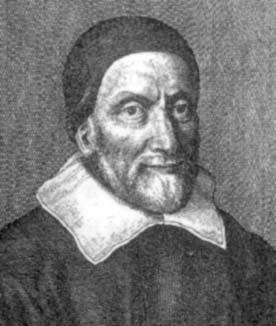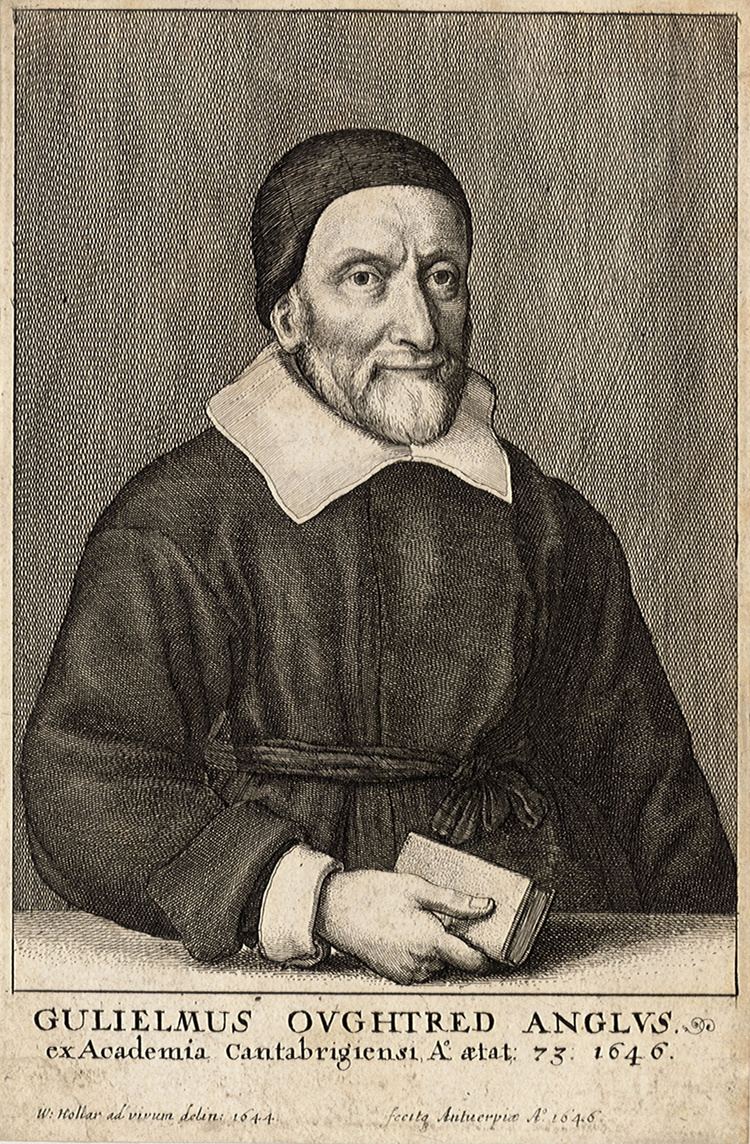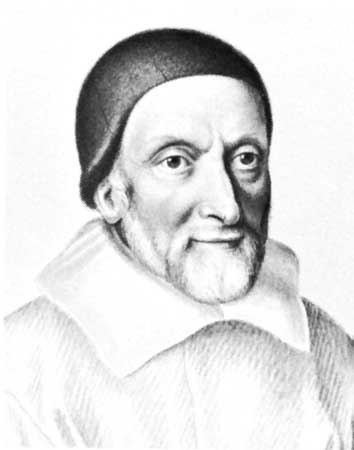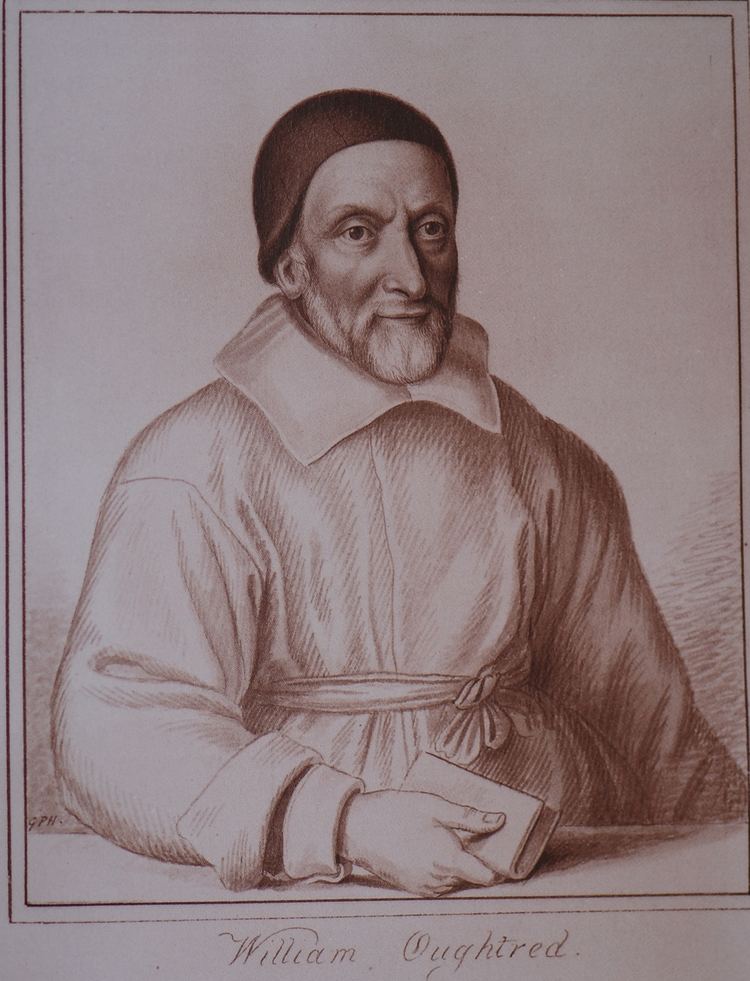Name William Oughtred | Fields Mathematician | |
 | ||
Known for Slide ruleMultiplication "×" sign Died June 30, 1660, Albury, United Kingdom Similar People | ||
March 5 heitor villa lobos j b lenoir william oughtred
William Oughtred ( ; 5 March 1574 – 30 June 1660) was an English mathematician and Anglican minister.
Contents
- March 5 heitor villa lobos j b lenoir william oughtred
- William oughtred
- Early life
- Marriage children
- Career
- Interest in the occult
- Legacy
- Books
- Slide rules
- Sun dials
- References

After John Napier invented logarithms and Edmund Gunter created the logarithmic scales (lines, or rules) upon which slide rules are based, it was Oughtred who first used two such scales sliding by one another to perform direct multiplication and division; and he is credited as the inventor of the slide rule in about 1622. Oughtred also introduced the "×" symbol for multiplication as well as the abbreviations "sin" and "cos" for the sine and cosine functions.

William oughtred
Early life

Oughtred was born at Eton in Buckinghamshire (now part of Berkshire), and educated there and at Eton College of which he became fellow. Being admitted to holy orders, he left the University of Cambridge about 1603, for a living at Shalford; he was presented in 1610 to the rectory of Albury, near Guildford in Surrey, where he settled.
Marriage & children

On 20 February 1606, he married Christsgift Caryll, (niece) of the Caryll family of Tangley Hall at Wonersh, of which Lady Elizabeth Aungier (daughter of Sir Francis), wife of Simon Caryll 1607-1619, was matriarch and then dowager until her death c.1650. They had twelve children, William, Henry, Henry (the first Henry died as a baby), Benjamin, Simon, Margaret, Judith, Edward, Elizabeth, Anne, George, and John. Two of his sons, Benjamin and John, shared Oughtred's interest in instruments and became watchmakers.
Career
About 1628 he was appointed by the Earl of Arundel to instruct his son in mathematics. He corresponded with some of the most eminent scholars of his time, including William Alabaster, Sir Charles Cavendish, and William Gascoigne. He kept up regular contacts with Gresham College, where he knew Henry Briggs and Gunter.
He offered free mathematical tuition to pupils, who included Richard Delamain, and Jonas Moore, making him an influential teacher of a generation of mathematicians. Seth Ward resided with Oughtred for six months to learn contemporary mathematics, and the physician Charles Scarburgh also stayed at Albury; John Wallis, and Christopher Wren corresponded with him. Another Albury pupil was Robert Wood, who helped him get the Clavis through the press.
The invention of the slide rule involved Oughtred in a priority dispute with Delamain. They also disagreed on pedagogy in mathematics, with Oughtred arguing that theory should precede practice.
He remained rector until his death in 1660 at Albury, a month after the restoration of Charles II.
Interest in the occult
Oughtred had an interest in alchemy and astrology. The testimony for his occult activities is quite slender, but there has been an accretion to his reputation based on his contemporaries.
According to John Aubrey, he was not entirely sceptical about astrology. William Lilly, an eminent astrologer, claimed in his autobiography to have intervened on behalf of Oughtred to prevent his ejection by Parliament in 1646. In fact, Oughtred was protected at this time by Bulstrode Whitelocke. Aubrey states that (despite their political differences) he was also defended by Sir Richard Onslow.
Elias Ashmole was (according to Aubrey) a neighbour in Surrey, though Ashmole's estates acquired by marriage were over the county line in Berkshire; and Oughtred's name has been mentioned in purported histories of early freemasonry, a suggestion that Oughtred was present at Ashmole's 1646 initiation going back to Thomas De Quincey. It was used by George Wharton in publishing The Cabal of the Twelve Houses astrological by Morinus (Jean-Baptiste Morin) in 1659.
He expressed millenarian views to John Evelyn, as recorded in Evelyn's Diary, entry for 28 August 1655.
Legacy
Oughtred's name is remembered in the Oughtred Society, a group formed in the United States in 1991 for collectors of slide rules. It produces the twice-yearly Journal of the Oughtred Society and holds meetings and auctions for its members.
Books
He published, among other mathematical works, Clavis Mathematicae (The Key to Mathematics), in 1631. It became a classic, reprinted in several editions, and used by Wallis and Isaac Newton amongst others. It was not ambitious in scope, but an epitome aiming to represent current knowledge of algebra concisely. It argued for a less verbose style of mathematics, with a greater dependence on symbols; drawing on François Viète (though not explicitly), Oughtred also innovated freely in symbols, introducing not only the multiplication sign as now used universally, but also the proportion sign (double colon ::). The book became popular around 15 years later, as mathematics took a greater role in higher education. Wallis wrote the introduction to his 1652 edition, and used it to publicise his skill as cryptographer; in another, Oughtred promoted the talents of Wren.
Other works were a treatise on navigation entitled Circles of Proportion, in 1632, and a book on trigonometry and dialling, and his Opuscula Mathematica, published posthumously in 1676. He invented a universal equinoctial ring dial of two rings.
Slide rules
Oughtred's invention of the slide rule consisted of taking a single "rule", already known to Gunter, and simplifying the method used to employ it. Gunter required the use of a pair of dividers, to lay off distances on his rule; Oughtred made the step of sliding two rules past each other to achieve the same ends. His original design of some time in the 1620s was for a circular slide rule; but he was not the first into print with this idea, which was published by Delamain in 1630. The conventional design of a sliding middle section for a linear rule was an invention of the 1650s.
Sun dials
He invented the double horizontal sundial, now named Oughtred-type after him. A short description The description and use of the double Horizontall Dyall (16 pages) was added to a 1653 edition (in English translation) of the pioneer book on recreational mathematics, Récréations Mathématiques (1624) by Hendrik van Etten and Jean Leurechon. That translation itself is no longer attributed to Oughtred, but (probably) to Francis Malthus.
